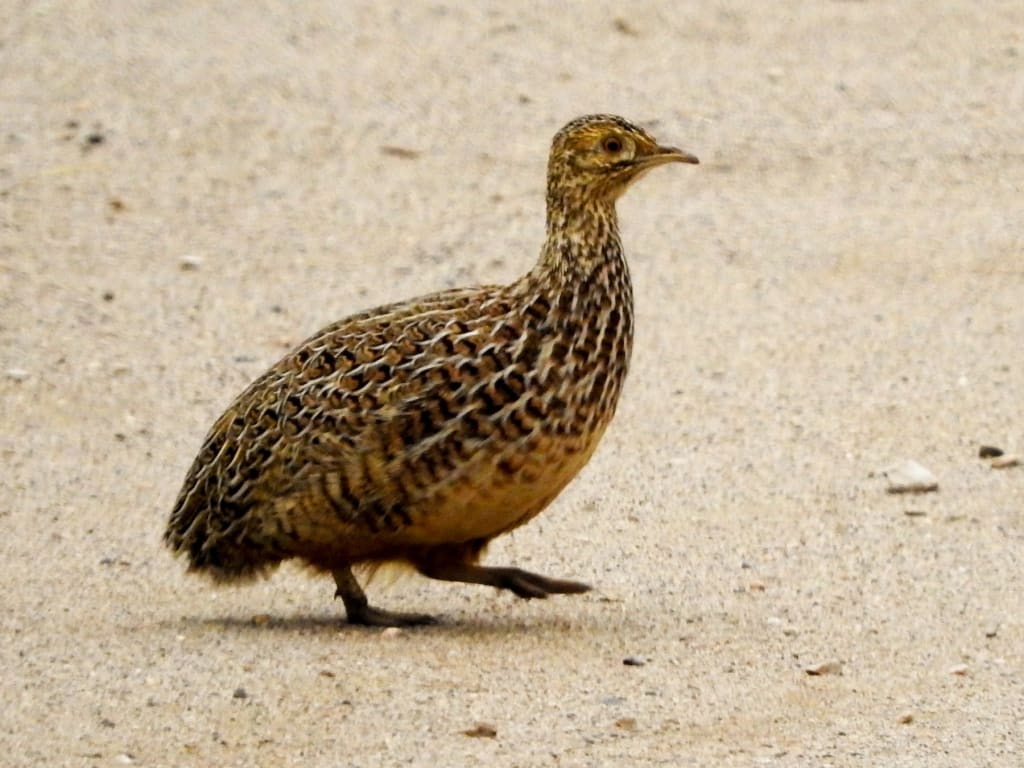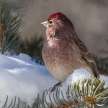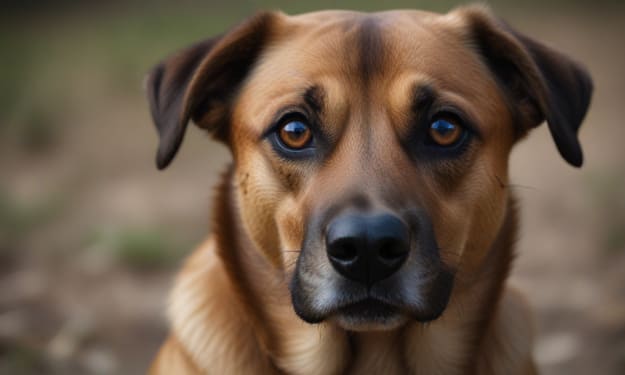
Spotted Nothura is a tinamou grassland with a wide distribution from the north of central Argentina over Uruguay and Paraguay to northeastern Brazil. Generally this little tinamou is cryptically patterned on a light brownish base coat with brown and black mottling, which in terrestrial grassland conditions provides camouflage. The specimen appears very similar to the one of the closely related Chaco Nothura (Nothura chacoensis) from northern Paraguay and Argentina, but overall, Spotted Nothura is darker. Eight spotted subspecies of Nothura are recognised, forming a cline from smaller, darker birds in the north to larger, brighter birds in the south. The Tinamous are earthy, pudgy birds with very short tails and long wings. Nothuras are small, short billed, tinamous tawny, inhabiting all grasslands or open brush. Spotted Nothura is very complex, but typically its upper parts are red, greyish or brown, spotted and black vermiculated. The underparts are buffy, with the back and breast more or less streaked with dusky. The genders are identical. Spotted Nothura is the most widespread species of nothura and it overlaps with the other members of the genus. White-bellied Nothura (Nothura boraquira) has bright yellow tarsi and thighs, light (whiter) subsides, sharper spotting on the sides of the breast, sharper barring on the flanks, and full black remiges ' inner webs. Lesser Nothura (Nothura minor) is smaller and more rufescent, and is confined to the campo grassland, excluding areas with shorter grass or farming lands. Spotted Nothura is somewhat similar to Darwin's Nothura (Nothura darwinii), but Spotted Nothura has longer tarsi and legs, and Darwin's outermost main inner webs are unmarked (as opposed to Spotted's). Spotted Nothura is similar to Chaco Nothura (Nothura chacoensis), but Chaco has paler upper parts (ochraceous buff instead of dusky rufescent or greyish black), dark neck and breast markings are more muted, thinner and less prominent, and the breast and belly are much lighter and translucent. Dwarf Tinamou (Taoniscus nanus) is smaller and pudgier in contrast. The red-winged Tinamou (Rhynchotus rufescens) is much larger and more ochraceous. Crested tinamous (the genus of Eudromia) is slightly broader and has a long, narrow crest. Nothoprocta tinamous is taller, has a longer, more decurved bill and also has a more prominent crest. Adults of a spotted Nothura eat plant and animal food, but plant material makes up much of the diet. The most frequent type of plant was grasses, followed by beans; the diet often included a few fruits. Certain plants eaten include Solanaceae, Oxalidaceae, and Malvaceae. Dietary animals that these birds consume include bees, larvae, butterflies, orthopterans, lepidopterans, spiders, molluscs, myriapods, and crustaceans. Unlike other tinamous species, Spotted Nothura is terrestrial, and when threatened, it appears to avoid escaping. Except when dirty, they navigate perfectly and easily. The flight is low, just 2-4 m above ground level, and they usually fly only 15-20 m until they crash down to earth. The flight is direct; glides are shorter, interspersed with longer flights. Spotted Nothuras aren't particularly diligent, or when they're hunted extensively. Truly black crown, or streaked with a light grey buffy. The head parts, including the nape including hindneck, light ochraceous or greyish brown, patterned narrow to broad with black stripes. The base colouring of the upper sections is light greyish or olivaceous brown, spotted and vermiculated black, and striped yellowish white. Ochraceous, or tawny, black-barred wing feathers. Remiges rusty brown or blackish, barred evenly on all sides with buff or reddish ochre. Dark hair, and spotless. Lower foreneck and tawny or ochraceous underpieces; the belly is unmarked, while most underpieces are makred on the flanks with dark or blackish dots, stripes, and lines.
About the Creator
MB
I am a bird aficionado and really enjoy spotting them them on hikes. I greatly appreciate the variety of birds cross North America and the world. They are amazing and intelligent creatures, each so unique and with a wonderful life.






Comments
There are no comments for this story
Be the first to respond and start the conversation.